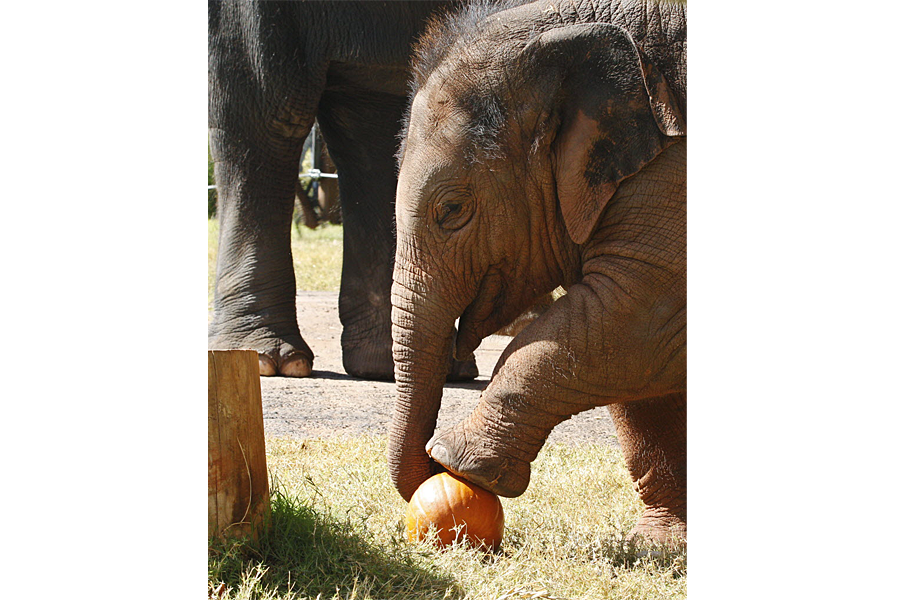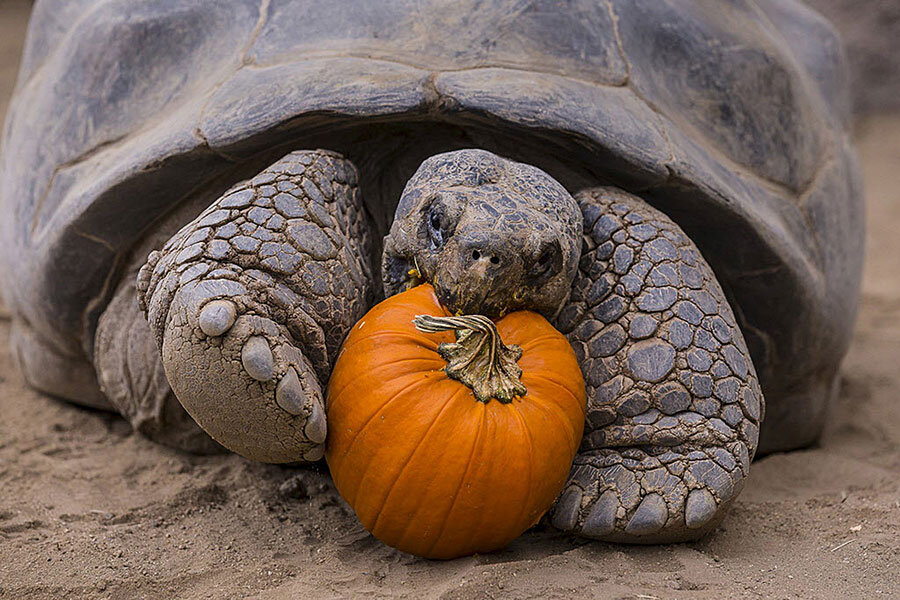Humans may have saved pumpkins, squash, and gourds from extinction
When you take a bite of pumpkin pie or caramelized butternut squash this Thanksgiving, you might want to give thanks for those living in the Americas some 10,000 years ago.
If it weren’t for ancient American agriculturalists, the precursors to today’s squash, gourds, and pumpkins probably would have gone extinct, say scientists. And Thanksgiving dinner would look a little less orange.
A new study has found that human domestication saved those plants, Cucurbita, from following large herbivores into extinction across the Americas.
Cucurbita relied on humongous plant eaters, like mastodons, to disperse their seeds across the landscape. Without such assistance, the plants likely would have dwindled in population, according to new research published Monday in the journal Proceedings of the National Academy of Sciences.
“Pumpkins and squashes are evolved from a plant that is really meant to have megafauna on the landscape,” study lead author Logan Kistler tells The Christian Science Monitor in an interview. Mastodons and other large herbivores would eat these wild fruits and then deposit the seeds across the landscape in their dung. Then new squash and gourd plants would grow, the megafauna would eat the fruit, and the whole cycle would continue.
“As megafauna disappeared,” he says, “that had serious effects on the wild populations. But humans, in a way, filled the dispersal role of those disappearing large mammals.”
Humans, “a new feature on the landscape,” Dr. Kistler says, picked up where mastodons left off.
But people probably didn’t like the fruit very much right away. In the wild, “they are about the size of a baseball, they’re incredibly tough, and they’re not edible by any standard that humans would use,” says Kistler. “They’re unbelievably bitter.”
So domestication likely began with choosing the sweeter varieties. “Obviously the toxic bitterness is one of the first things that would have had to have gone away when it became an edible domestic species,” George Perry, another study author, tells the Monitor.
The giant herbivores likely weren’t bothered by the bitter fruits.
“We have mastodon dung deposits that go back 30,000 years that have squash seeds in them,” says Kistler. “The fact that we do have the squash seeds in the mastodon dung suggests that they must not have been bothered by the bitterness.”
The researchers investigated DNA sequences of various mammals, looking for a relationship between the ability to taste bitterness and body size. “The megafauna, the larger-bodied species, tend not to have as many bitter taste receptor genes,” says Dr. Perry.
Bitter taste serves a purpose, the scientists explain. "As far as we know, we evolved the capability to taste bitter substances to detect and avoid toxicity,” says Kistler.
The researchers posit that the size of the animal’s meal can determine its tolerance for bitter toxins. For large animals, like the present-day elephants, a single gourd would be just a tiny portion of its food. “It’s part of several kilograms of food in a particular feeding session,” says Kistler. So, “maybe that toxin just isn’t nearly enough of the biomass to cause a problem.”
But for a smaller animal, a squash might constitute its entire meal.
Before the scientists compared bitter taste receptors in animals, they dove into the DNA of the squashes themselves. Extracting DNA from modern and ancient, wild and domestic squashes across the Americas, they examined markers indicating where different species lived and evolved.
The researchers found that domestication happened across multiple locations independently.
They also found evidence that the range of some wild squashes extended over large expanses. “This lineage that appears to have been around the Gulf of Mexico before, now is only in a few spots,” explains Perry. But in those spots, “they’re highly similar sequences, suggesting there used to be one genus range.”
Between the large herbivores acting as dispersal mutualists and the big animals’ disruption of the landscape, the region must have been conducive to the Cucurbita’s vines, the researchers say.
Although humans made the fruits edible and helped them survive this mass extinction, ultimately it was their relationship with the ancient megafauna that gave the gourds, squashes, and pumpkins their start.
“The pumpkins in the pie are the product of this long coevolutionary process with things like mastodons,” Kistler says. “Understanding the ecological context of the species that feed us on a daily basis, I think, is worthwhile.”









